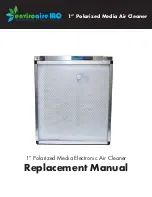
7
■
English
Outdoor Unit Installation
Cautions on pipe handling
• Protect the open end of the pipe from dust and moisture.
• All pipe bends should be as gentle as possible. Use a pipe bender for bending.
Selection of copper and heat insulation materials
When using commercial copper pipes and fittings, observe the following:
Wall
If no flare cap is
available, cover
the flare mouth
with tape to keep
dirt and water out.
Be sure to
place a cap.
Rain
• Insulation material: Polyethylene foam
Heat transfer rate: 0.041 to 0.052W/mK (0.024 to 0.030Btu/fth°F) (0.035 to 0.045kcal/mh°C)
Be sure to use insulation that is designed for use with HVAC Systems.
• ACR Copper only.
• Be sure to insulate both the gas and liquid piping and observe the insulation dimensions as below.
Gas side
Piping size
O.D. 3/8 inch
(9.5mm)
O.D. 1/4 inch
(6.4mm)
1-3/16 inch (30mm)
or more
1-3/16 inch (30mm)
or more
0.031 inch (0.8mm)
(C1220T-O)
0.031 inch (0.8mm)
(C1220T-O)
I.D. 15/32-19/32 inch
(12-15mm)
I.D. 5/16-13/32 inch
(8-10mm)
13/32 inch
(10mm) Min.
Minimum bend radius
Piping thickness
Thermal insulation size
Thermal insulation
thickness
Liquid side
• Use separate thermal insulation pipes for gas and liquid refrigerant pipes.
•
Using finishing tape, bundle and wrap the indoor unit piping and drain hose
together so that the drain hose is below the other piping.
Gas pipe
Liquid pipe
Gas pipe
insulation
Liquid pipe
insulation
Finishing tape
Drain hose
5.
Pressure test and evacuating system
WARNING
• Make sure that air or any matter other than refrigerant (R410A) does not get into the refrigeration cycle.
• If refrigerant gas leaks should occur, ventilate the room as soon and as much as possible.
• R410A, as well as other refrigerants, should always be recovered and never be released directly into the environment.
•
Use a vacuum pump for R410A exclusively. Using the same vacuum pump for different refrigerants may damage the vacuum
pump or the unit.
CAUTION
It is highly recommended that you do not open/close the stop valves when the outdoor temperature is below −5°F (−21°C) as
this may result in refrigerant leakage.
01_EN_3P686855-1.indd 7
2022/05/16 9:29:38


































